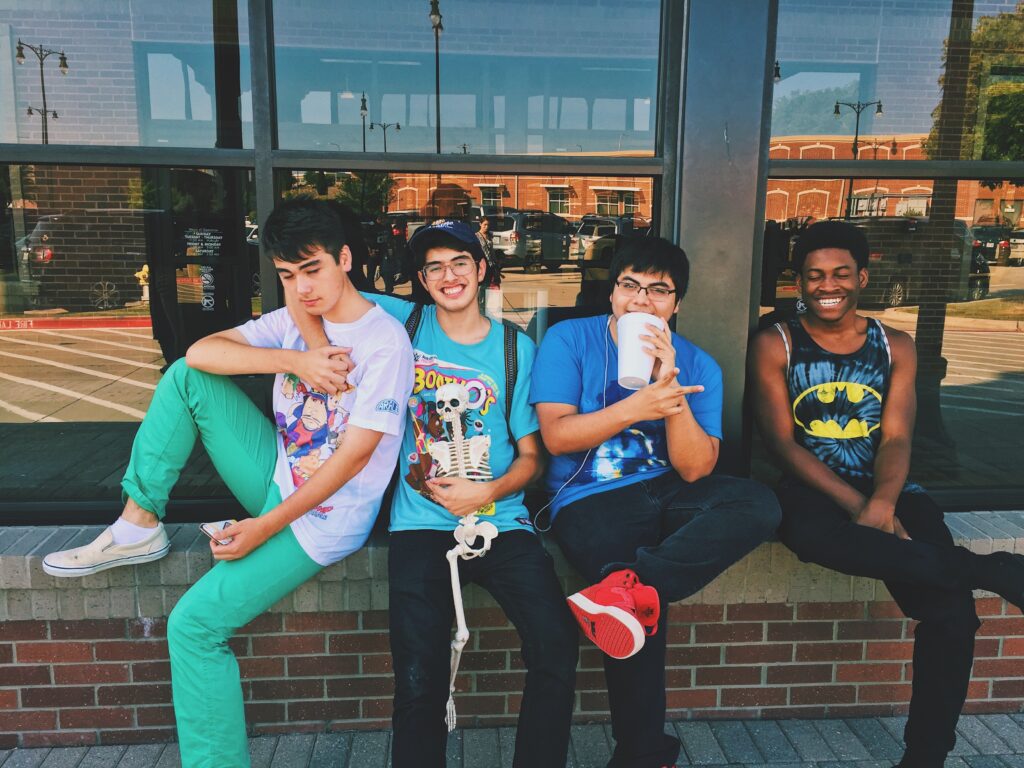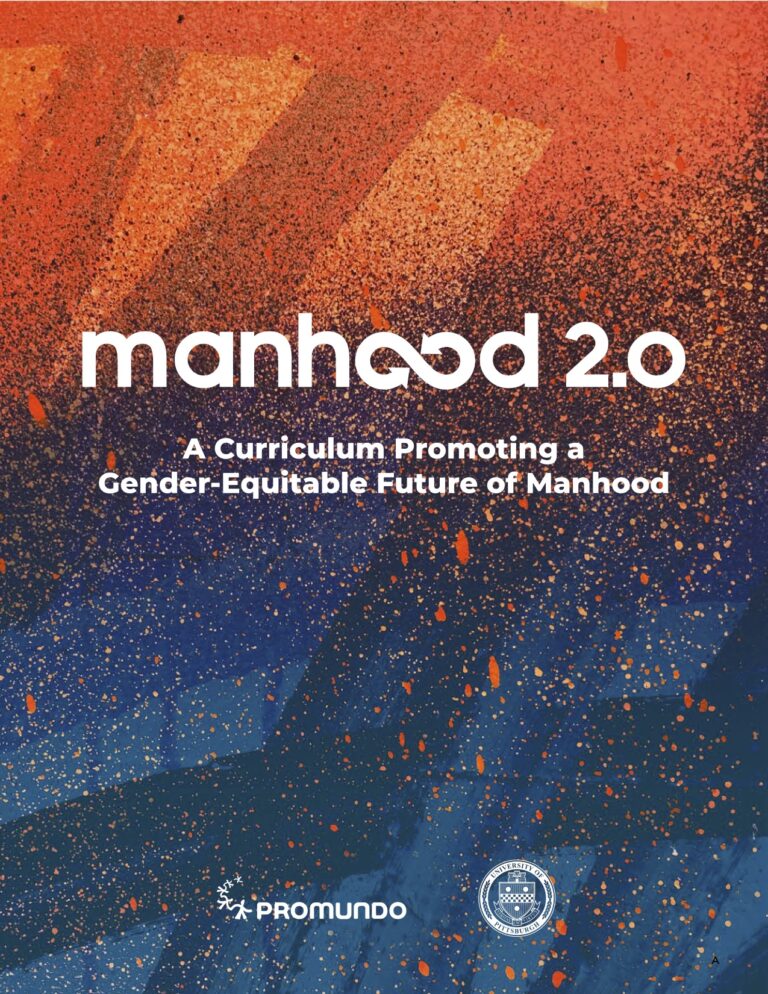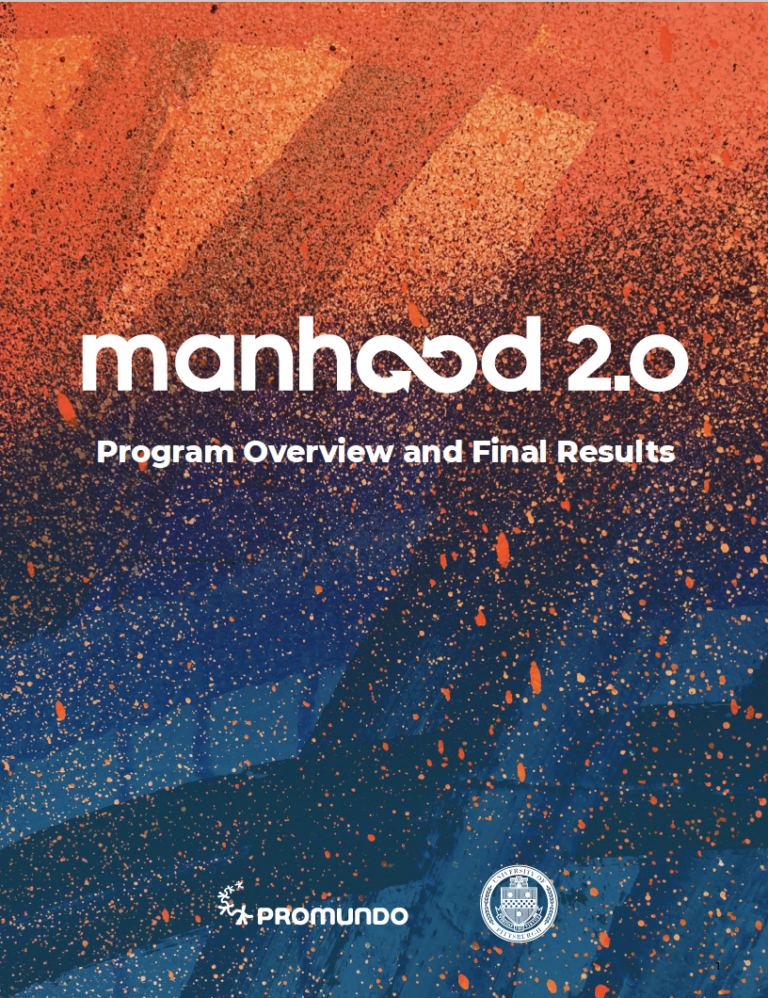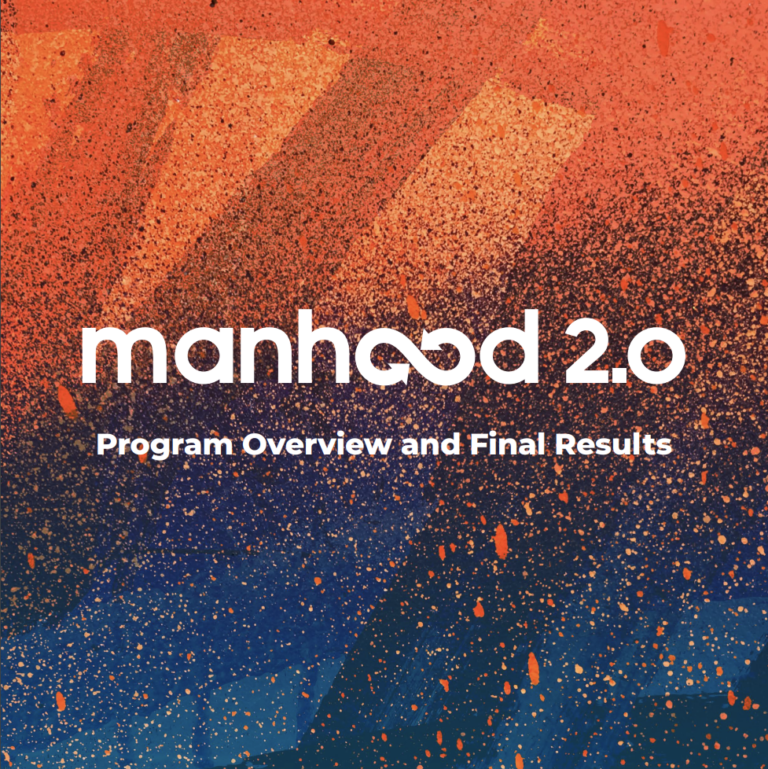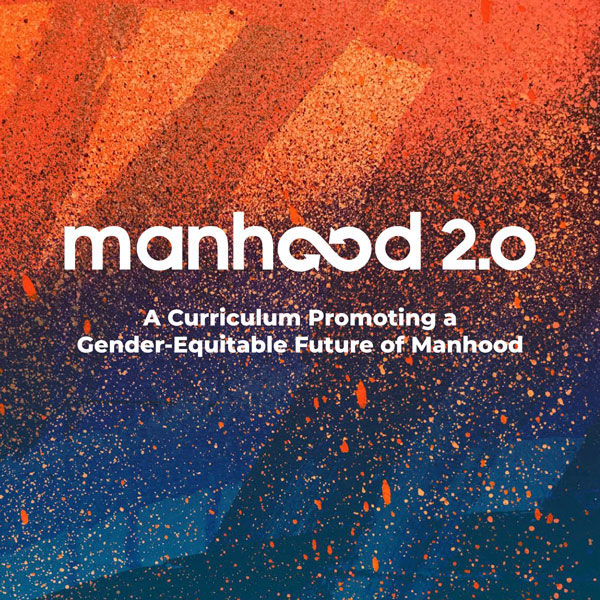Manhood 2.0 is an initiative developed by Equimundo and the University of Pittsburgh to engage adolescent boys and young men (ages 15-24) in reflecting on the impacts of harmful gender norms, specifically with the aims of preventing teen pregnancy, dating violence, sexual assault, and LGBTQIA+ bullying, and of building healthier relationships.
The initiative is an adaptation of Equimundo’s flagship Program H, an evidenced-based program launched by Equimundo and partners in 2002. The Program H methodology combines group education sessions with youth-led campaigns and activism, and has been adapted in at least 32 countries around the world.
Manhood 2.0 is designed to engage young men in the United States in questioning and challenging harmful norms, and ultimately aims to transform them. The program encourages adolescent boys and young men to reflect critically about their identities within the particular contexts in which they are formed. They are encouraged to think and talk about gender beyond the rigid divisions of male and female, to value a diversity of gender expressions, and to build healthier attitudes, behaviors, and relationships, based on respect and equality.
Manhood 2.0 was implemented by the Latin American Youth Center (LAYC) in Washington, DC from November 2017 to July 2018, with young men ages 15 to 18. After implementation, our partners at Child Trends conducted a rigorous evaluation of Manhood 2.0.
Since Black and Latino youth were the primary participants in the program, for the evaluation, Child Trends and LAYC recruited mostly Black and Latino young men from the broader Washington, DC metropolitan area through LAYC and local high schools.
They learned critical lessons for designing pregnancy prevention programs for young men, including:
- Community support and pre-established trust play a critical role in recruiting young men.
- Young men are seeking long-term support; acknowledging that and building relationships with them right away enhances participation throughout the program.
- Out-of-school young men remain largely disengaged, and more must be done to figure out how to provide a space for them that fits their particular needs.
- For the first time, many young men had a space to think about gender norms and stereotypes, and they shifted some of their views on gender.
- Young men indicated the need for shared, safe spaces to talk about their feelings and the topics covered in the program.
- Nonjudgmental facilitators with the same background and life experiences as the young men were instrumental in creating a sense of brotherhood and openness among the young men.
- Programs for young men of color that address racism in young men’s lives may influence how programs are received and work.
Read our program overview and final results here and the findings and lessons learned by Child Trends here. Read a secondary analysis of a randomized clinical trial evaluating the effectiveness of the Manhood 2.0 intervention in Pittsburgh, Pennsylvania here.
